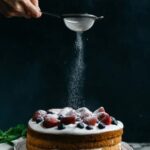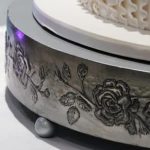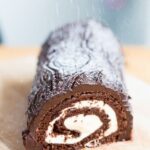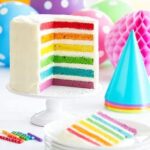Buttercream cake decorations are a delightful way to elevate the appearance of any baked treat. Learning how to pipe buttercream cake decorations is a valuable skill that allows you to create beautiful designs and add a personal touch to your creations. Whether you’re a beginner or looking to refine your skills, mastering the art of piping buttercream can help you achieve professional-looking results.
When it comes to buttercream cake decorations, the type of frosting you use plays a crucial role in the outcome of your design. From American buttercream to Swiss meringue buttercream, each type offers unique textures and flavors that can enhance the overall look of your cake. Understanding the differences between these frostings will help you choose the best option for your piping needs.
In addition to selecting the right frosting, having essential tools for piping buttercream decorations is essential. Piping bags, tips, couplers, and spatulas are just some of the basic tools you’ll need to get started. These tools not only make it easier to create intricate designs but also provide precision and control when decorating your cakes. By familiarizing yourself with these tools and their functions, you can ensure smooth sailing when it comes to piping buttercream decorations.
Types of Buttercream Frosting for Piping
Buttercream frosting is a versatile and delicious option for decorating cakes. When it comes to piping buttercream decorations, the type of frosting you use can make a big difference in the outcome. There are several types of buttercream frostings that work well for piping, each offering unique characteristics and benefits.
American Buttercream
American buttercream is perhaps the most common type of buttercream frosting used for piping decorations. Made with powdered sugar, butter, and flavorings, American buttercream is easy to make and holds its shape well when piped onto cakes. It has a sweet flavor and smooth texture, making it ideal for beginners looking to practice their piping skills.
Swiss Meringue Buttercream
Swiss meringue buttercream is a more advanced option that offers a silky smooth texture and less sweetness compared to American buttercream. Made by whipping egg whites and sugar over a double boiler before adding softened butter, Swiss meringue buttercream is light and airy, making it great for intricate designs. Its stability allows for detailed piping work without losing definition.
Italian Meringue Buttercream
Italian meringue buttercream is similar to Swiss meringue buttercream but involves pouring hot sugar syrup into whipped egg whites instead of cooking them over heat. This method creates a stable and luxurious frosting that pipes beautifully onto cakes. Italian meringue buttercream has a glossy finish and holds up well in warmer temperatures, making it a favorite among professional bakers for wedding cakes and other special occasions.
By understanding the differences between these types of buttercream frostings, you can choose the one that best suits your preferences and skill level when practicing how to pipe buttercream cake decorations. Each type offers its own set of advantages for creating beautifully piped designs on cakes that will impress your friends and family.
Essential Tools for Piping Buttercream Decorations
When it comes to piping buttercream cake decorations, having the right tools can make a huge difference in the outcome of your designs. Some essential tools for piping buttercream decorations include piping bags, piping tips, a coupler, and a turntable.
Piping bags come in different materials such as disposable plastic or reusable cloth, and they allow you to easily pipe buttercream onto your cakes. Piping tips also come in various shapes and sizes, each creating different designs when used with the buttercream frosting.
A coupler is a handy tool that allows you to easily switch out different piping tips on the same piping bag without having to empty it completely. This saves time and makes the decorating process much more efficient. Lastly, a turntable is a rotating platform that allows you to smoothly turn your cake as you pipe decorations onto it. This helps in achieving even and consistent designs all around the cake.
In order to create professional-looking buttercream cake decorations, mastering how to pipe buttercream effectively is crucial. With the right tools at your disposal, you can explore various techniques and designs to elevate your cake decorating skills. Practice is key when it comes to piping buttercream decorations, so don’t be afraid to experiment with different piping tips and patterns until you find what works best for you.
| Essential Piping Tools | Description |
|---|---|
| Piping Bags | Available in disposable plastic or reusable cloth materials for easy frosting application. |
| Piping Tips | Come in various shapes and sizes for creating different decorative patterns on cakes. |
| Coupler | Allows interchangeability of piping tips on the same bag without needing to empty it. |
| Turntable | A rotating platform that helps in evenly decorating cakes by allowing easy rotation. |
Preparing Buttercream for Piping
Buttercream is a versatile frosting that is perfect for creating beautiful cake decorations through piping. Before you can start piping buttercream onto your cakes and cupcakes, it’s essential to prepare the frosting correctly. The key to successful piping lies in the consistency of your buttercream. You want it to be smooth and creamy, but firm enough to hold its shape when piped.
To achieve the ideal consistency for piping buttercream decorations, start by making sure your butter is at room temperature. Softened butter will blend more easily with the other ingredients, resulting in a smoother frosting. Once you’ve creamed the butter, gradually add powdered sugar and any additional flavorings or coloring. Mix until everything is well combined and the frosting is free of lumps.
One popular method for preparing buttercream for piping is to adjust the consistency using milk or heavy cream. If your frosting is too thick for piping, add a small amount of liquid and mix until you reach the desired texture.
On the other hand, if your buttercream is too thin, you can add more powdered sugar to thicken it up. Finding the right balance will ensure that your buttercream holds its shape while also being easy to pipe onto your cakes and desserts.
| Buttercream Consistency | Adjustments |
|---|---|
| Too Thick | Add small amount of milk or cream |
| Too Thin | Add more powdered sugar |
Basic Piping Techniques for Beginners
As a beginner in the art of cake decorating, learning how to pipe buttercream decorations is a great place to start. Buttercream frosting is versatile and easy to work with, making it ideal for creating various designs on cakes and cupcakes. Before diving into more advanced techniques, mastering the basics of piping buttercream is essential.
To begin piping buttercream decorations, you will need a few key tools. First and foremost, you will need a set of piping tips in different shapes and sizes. Some common tips used for buttercream decorations include round tips, star tips, leaf tips, and petal tips. Additionally, a piping bag or a reusable piping bag with couplers to attach the tips is necessary for smooth and controlled piping.
When preparing your buttercream for piping, consistency is key. The buttercream should be soft enough to pipe easily but firm enough to hold its shape once piped onto the cake. If the buttercream is too stiff, it can be difficult to pipe smoothly; if it’s too soft, the design may not hold up well.
To achieve the perfect consistency, you can adjust by adding small amounts of liquid (such as milk or cream) for a softer texture or powdered sugar for a stiffer texture. Experimenting with different consistencies will help you find what works best for your desired designs.
Advanced Piping Techniques for Intricate Designs
When it comes to creating intricate designs with buttercream frosting, mastering advanced piping techniques is essential. With the right skills and practice, you can take your cake decorating to the next level and wow your friends and family with stunning creations. Here are some advanced piping techniques that will help you achieve intricate designs on your cakes:
- Lace Piping: Lace piping involves creating delicate lace-like patterns on cakes using a fine piping tip. To achieve this technique, start by piping a thin line of buttercream in a lace design onto parchment paper. Once the lace pattern is dry, carefully peel it off and attach it to the cake for an elegant touch.
- Rosette Swirls: Create beautiful rosette swirls by starting at the center of a cupcake or cake and spiraling outwards in a circular motion. This technique adds a touch of elegance and sophistication to any dessert.
- Ruffle Piping: Ruffle piping involves creating frilly, textured edges on cakes or cupcakes. To achieve this look, use a petal tip to create overlapping rows of petals around the edge of the cake in a ruffling motion.
These advanced piping techniques may require some patience and practice to master, but once you get the hang of them, you’ll be able to create show-stopping designs that will impress everyone who lays eyes on your creations.
Remember to experiment with different piping tips, frosting consistencies, and colors to unleash your creativity and come up with unique designs that showcase your skills as a buttercream decorator.
With dedication and practice, you’ll soon be able to create intricate buttercream decorations that rival those made by professional bakers. So don’t be afraid to challenge yourself with these advanced piping techniques and push the boundaries of your cake decorating skills.
Happy decorating.
Troubleshooting Common Piping Issues
When it comes to piping buttercream cake decorations, there can be some common issues that arise during the process. Knowing how to troubleshoot these problems can help you achieve beautiful and professional-looking designs on your cakes. Here are some common piping issues you may encounter and how to fix them:
1. Buttercream consistency: One of the most common problems when piping buttercream decorations is having the wrong consistency of the frosting. If your buttercream is too stiff, it can be difficult to pipe smoothly, leading to uneven and jagged lines.
On the other hand, if your buttercream is too soft, your decorations may not hold their shape and could collapse. To achieve the perfect consistency for piping, make sure your buttercream is at room temperature and adjust the amount of liquid or powdered sugar as needed.
2. Air bubbles: Another issue that can affect the appearance of your piped decorations is air bubbles in the buttercream. These bubbles can cause unwanted gaps or holes in your design, ruining the overall look of your cake. To prevent air bubbles, make sure to properly mix your buttercream before filling your piping bag. You can also tap the filled piping bag on the counter a few times to release any trapped air.
3. Blowouts: Blowouts occur when too much pressure is applied while piping, causing the frosting to burst out uncontrollably from the tip of the bag. This can lead to messy designs and a lack of precision in your decorations. To avoid blowouts, practice applying consistent pressure while piping and make sure not to overfill your piping bag with too much frosting.
By addressing these common piping issues and following proper techniques, you can create stunning buttercream cake decorations that will impress your family and friends. Remember that practice makes perfect when it comes to mastering the art of piping buttercream, so don’t get discouraged if you encounter challenges along the way. With patience and dedication, you’ll soon be able to create beautiful designs on all your cakes using these troubleshooting tips for success.
Decorating Ideas for Buttercream Cake Decorations
Floral Designs
A popular and classic choice for buttercream cake decorations is creating intricate floral designs. From simple rosettes to elaborate flower bouquets, there are endless possibilities when it comes to using buttercream to craft beautiful blooms on your cakes. To achieve this, use different piping tips to create petals and leaves of various shapes and sizes. Experiment with different colors to add depth and dimension to your floral designs.
Textured Effects
Adding texture to your buttercream cake decorations can elevate the overall look of your desserts. Techniques like ruffles, swirled patterns, or basket weave designs can all be achieved through piping with the right tips and a steady hand. These textured effects not only enhance the visual appeal of your cakes but also provide an interesting tactile experience for those enjoying them.
Personalized Messages
Another creative way to use buttercream for cake decorations is by piping personalized messages or sentiments onto your baked creations. Whether it’s a birthday wish, congratulations message, or simply a loved one’s name, writing with buttercream adds a personal touch to any dessert. Practice piping letters and words on a separate surface before transferring them onto your cake to ensure neat and legible results.
By incorporating these decorating ideas into your buttercream cake creations, you can take your baking skills to the next level and impress friends, family, and customers with professional-looking designs that showcase your creativity and attention to detail.
Tips for Professional-Looking Buttercream Decorations
Achieving professional-looking buttercream decorations on cakes requires practice, patience, and attention to detail. To elevate your cake decorating skills and create stunning designs, consider the following tips:
Firstly, make sure your buttercream consistency is just right for piping. The ideal consistency for piping buttercream decorations is smooth, creamy, and easily spreadable. If it’s too stiff, it will be difficult to pipe intricate designs, while if it’s too soft, the decorations may not hold their shape. Experiment with adding small amounts of liquid (such as milk or cream) or powdered sugar to achieve the perfect consistency.
Secondly, invest in quality piping tools to enhance your decorating process. A set of piping bags, different types of piping tips (such as round tips for outlining and star tips for rosettes), couplers to easily switch out tips, and a turntable for smooth rotation are essential for creating professional-looking buttercream decorations. Additionally, having a bench scraper or offset spatula on hand can help you achieve clean edges and smooth surfaces on your cake.
Lastly, practice different piping techniques on a separate surface before decorating your cake to gain confidence and precision in your designs. From basic borders like shells and rosettes to advanced techniques like lacework or basketweave patterns, mastering various piping styles will allow you to create beautiful and intricate buttercream decorations that will impress any cake recipient. Remember that practice makes perfect when it comes to mastering the art of how to pipe buttercream cake decorations.
Conclusion and Final Thoughts on Piping Buttercream Decorations
In conclusion, mastering the art of piping buttercream cake decorations can elevate your baking skills to the next level. Whether you are a beginner or looking to advance your techniques, understanding the different types of buttercream frosting and essential tools required is crucial. With practice and patience, you can create intricate designs that will impress your friends and family.
One key aspect of achieving beautiful buttercream decorations is properly preparing the frosting for piping. The consistency of the buttercream plays a significant role in how well it holds its shape when piped onto cakes or cupcakes. By following the tips provided in this guide, you can ensure that your buttercream is perfect for creating stunning decorations.
Overall, experimenting with different piping techniques and designs will help you develop your own unique style in cake decorating. Remember to troubleshoot any common issues that may arise during the piping process and don’t be afraid to get creative with your decorations. With dedication and practice, you’ll soon be piping buttercream cake decorations like a pro. So go ahead, grab your piping bag and practice these techniques to create beautifully decorated treats for any occasion.
Frequently Asked Questions
How Do You Pipe Buttercream on a Cake for Beginners?
Piping buttercream on a cake for beginners involves using a piping bag fitted with a desired tip, holding the bag at an angle, and applying even pressure to create smooth lines or designs. It’s important to practice consistency in pressure and speed for uniform results.
How Do You Pipe Cake Decorations?
Piping cake decorations is a creative process that requires finesse and practice. Using various piping tips can help achieve different designs like rosettes, shells, or borders. Techniques like pressure control, hand positioning, and wrist movement play a crucial role in creating visually appealing decorations.
Should You Cool Buttercream Before Piping?
Cooling buttercream before piping depends on the specific recipe and room temperature conditions. In general, if the buttercream becomes too soft or runny while piping, it might be beneficial to chill it briefly in the fridge to maintain better shape and stability.
However, excessively cold buttercream can be difficult to pipe smoothly as well. Finding the right balance is key for successful piping results.

Welcome to my blog about home and family. This blog is a place where I will share my thoughts, ideas, and experiences related to these important topics. I am a stay-at-home mom with two young children. I hope you enjoy reading it! and may find some helpful tips and ideas that will make your home and family life even better!





